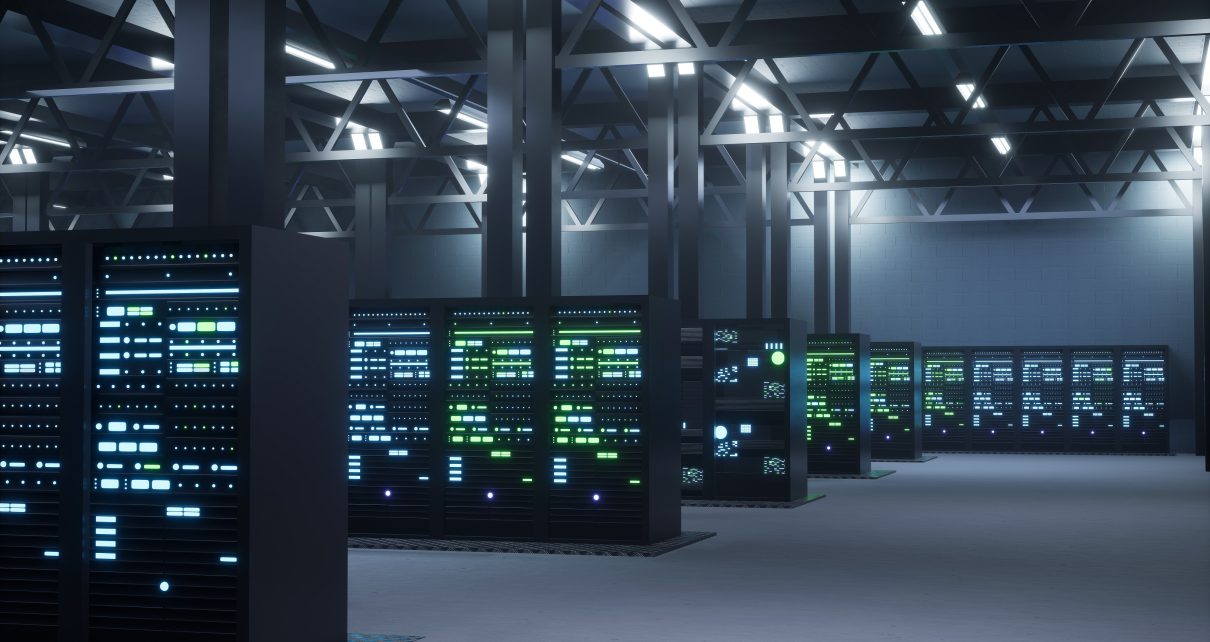Designing and delivering perfect racks always demands close collaboration. Yet many datacenters still operate with lean teams, and travel often remains impractical for businesses. Because of this, organizing racks so they arrive functional and deployment-ready has become increasingly important to a successful strategy.
As the world grows more digital, the demand for fast, reliable, and scalable computing infrastructure has surged. Businesses rely on data centers to support cloud services, enterprise apps, and artificial intelligence workloads. Consequently, deploying infrastructure at scale has evolved into both a core necessity and a significant engineering challenge.
What Is Data Center Infrastructure?
Data center infrastructure encompasses the physical and virtual resources that power your organization’s computing ecosystem. Specifically, it includes servers, storage systems, networking equipment, data cabling, plus power and cooling systems to keep everything running optimally. In addition, infrastructure extends to virtualization layers and management software—elements that ensure operational efficiency, security, and seamless data processing.
Evolution of Data Centers
- From Mainframes to Cloud Computing
In the early days, bulky mainframe systems operated inside climate-controlled rooms to prevent overheating. Over time, advancements in miniaturization and networking led to distributed computing systems. These developments paved the way for client-server architecture—and eventually evolved into today’s ubiquitous cloud computing platforms.
- Rise of Virtualization
Virtualization revolutionized data center operations by decoupling hardware from software. It enables multiple virtual machines (VMs) to run on a single physical server, which optimizes resource use and lowers costs. Moreover, virtualization facilitates disaster recovery, enhances scalability, and accelerates deployment cycles. As a result, it laid the groundwork for flexible, cloud-based service models.
Types of Data Centers
- Enterprise (On Premises) Data Centers
Owned and managed by organizations, these centers grant full control over security and customization. They’re ideal for critical applications that demand privacy and compliance.
- Colocation Data Centers
Companies lease rack space within shared facilities. Providers offer security, cooling, and power, allowing users to avoid large capital investments while scaling operations affordably.
- Cloud Data Centers
Run by cloud service providers, these centers deliver scalable compute and storage over the internet. Subscription-based pricing allows companies to pay only for what they use, making it easier to scale up mid-stream.
- Edge Data Centers
Located closer to end-users, edge centers reduce latency and enhance performance for real-time applications like IoT and autonomous vehicles. By processing data nearer the source, they ensure faster response times.
Deploying Infrastructure: A Five-Step Streamlined Process
Deploying new infrastructure follows a clear five-step sequence: design, procurement, build, shipping, and deployment. Each step can introduce challenges—from hardware defects to supply-chain delays. Indeed, companies that attempt “do it yourself” often face unexpected costs once hardware goes live.
Step 1: Design
Team members collaboratively assess hardware and software needs, then craft a detailed engineering blueprint to guide procurement and assembly.
Step 2: Procurement
Procurement teams acquire all components in accordance with the design. Once delivered to secure staging sites, every piece undergoes unboxing and defect testing.
Step 3: Build
While assembling the hardware, teams pay close attention to cable management—including bend radius, color coding, and labeling. They then integrate software and perform quality checks, such as verifying port mapping and running hardware diagnostics.
Step 4: Shipping
All logistics are coordinated to deliver prebuilt racks to the customer’s data center. On arrival, packaging materials are removed onsite.
Step 5: Deployment
Because the racks arrive fully assembled and optimized, data center teams can integrate them quickly—significantly accelerating installation timelines. Throughout, project managers maintain transparency by providing regular updates on timelines, supply chains, and any unforeseen challenges.
Core Components of Data Center Infrastructure
- Servers and Compute
Servers drive computation and data distribution. Modern designs prioritize performance, reliability, and scalability to handle diverse, resource-hungry workloads.
- Storage Systems
From HDDs and SSDs to object storage, SANs, and NAS solutions—these systems store and serve vast volumes of data. Efficient storage management ensures fast access and high reliability.
- Networking Gear
Routers, switches, firewalls, and load balancers form the data center’s communication backbone. They support secure, high-speed data transfer and manage network traffic seamlessly.
- Power and Cooling
Consistent power is essential. UPS units and backup generators prevent downtime, while efficient cooling systems help maintain optimal operating temperatures.
- Security Systems
Both physical (e.g., biometric access, cameras) and digital (e.g., firewalls, encryption, intrusion detection) security layers protect against unauthorized access and cyber threats.
Why It Matters
Traditionally, data centers have relied on manual processes and dedicated hardware, which made scaling cumbersome. However, hybrid models now merge on-premises infrastructure with cloud services. As a result, seamless integration across environments becomes critical.
Instaclustr conveniently bridges this gap. By integrating open-source technologies into your infrastructure stack, the platform maintains high performance, ensures reliability, and offers around-the-clock monitoring and fault tolerance. Most importantly, Instaclustr helps you scale fast with confidence.
Summary
By actively designing, building, and deploying racks using this structured approach, businesses can:
- Reduce deployment time
- Minimize supply chain and logistical surprises
- Maintain consistent quality and security
- Scale rapidly without sacrificing reliability



